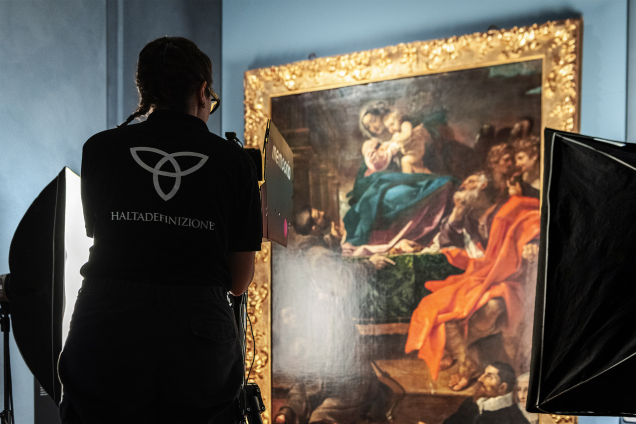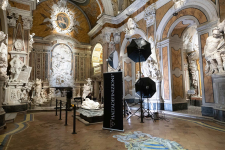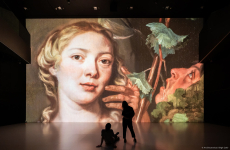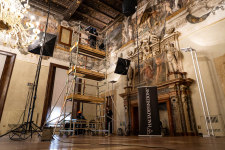Giovanni Francesco Barbieri, known as Guercino, comes back to the capital in an exposition entitled, “Guercino, the Ludovisi Era in Rome” (Guercino, L’era Ludovisi a Roma) being held at the Scuderie del Quirinale (lit. Quirinal Stables, also called Papal Stables) until January 26, 2025. This show celebrates the important relationship between the painter Guercino, who came from Cento, and the Ludovisi family.
One of the works that stands out among the others is called “The Madonna and Child with Saints Joseph, Francis and patrons”, by Ludovico Carracci, better known as La Carraccina. Carracci had a strong influence on the young Guercino; for this reason, having this masterpiece in Rome is an excellent opportunity for the public to get a close look at one of the paintings that inspired Guercino and his artistic journey.
While La Carraccina takes its central place in the exhibition in Rome, the Civica Pinacoteca (lit. Civic Art Gallery) of Guercino’s hometown of Cento, called “Il Guercino” after the artist, has taken a novel approach to managing the painting’s temporary absence. In collaboration with Haltadefinizione, a faithful physical reproduction of the work has been made from its ultra-high definition digital image, digitized with gigapixel technology by Haltadefinizione itself. The municipality of Cento and the Region of Emilia-Romagna have both contributed to the project, as part of a broader program of investment in bringing added value to the local cultural heritage. It also provides continuity to keep the Civica Pinacoteca open to the public, a year after the restoration work that was done after the 2012 earthquake.

The director of cultural affairs of the town of Cento, Silvia Bidoli, has stated the importance of this initiative, saying, “We are aware of the importance of La Carraccina to our museum, so we adopted a solution to fill the void left by the painting’s absence, by using cutting-edge technology. Not only do we have a faithful replica of the original, but you can touch it and look at it from close range. This makes a whole new kind of interactivity possible, not just for physical interaction but for teaching purposes too.”
The replica will remain the property of the Civica Pinacoteca in Cento even after the return of the original. This will open the door to many new interactive and educational uses. Technology can bring the arts closer to people in a direct and inclusive way, so that what began as a logistical challenge has become a cultural opportunity.



